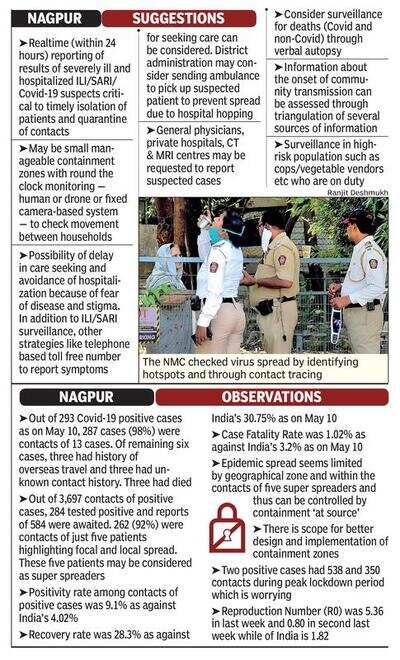
Nagpur: Crediting the lockdown with slowing the spread of Covid-19 in India, specialists from Public Health Foundation of India (PHFI), New Delhi, have suggested extensive scaling up of testing, robust surveillance, sero-surveillance through rapid antibody test kits and expanded observation of vulnerable patients especially in non-hotspot zones to ensure hard won success was not lost in post-lockdown period.
Director of PHFI Dr Sanjay Zodpey and his colleague Habib Hasan conducted a detailed analysis of Covid-19 epidemic of the country, compared with situation in other nations. They also suggested measures to control the disease in post-lockdown period.
Dr Zodpey, also member on one of the committees of Indian Council of Medical Research (ICMR), along with Dr Himanshu Negandhi and Dr Ritika Tiwari also conducted detailed study of epidemic in Nagpur and came up with a lot of recommendations.
Divisional commissioner Sanjeev Kumar and municipal commissioner Tukaram Mundhe came to know Dr Zodpey was a resident of the city and staying here during lockdown period. They requested him to help in improving mechanism to deal with the epidemic. Accordingly, Dr Zodpey, also vice-president of academics at PHFI, and his colleagues submitted two reports to Kumar and Mundhe on May 10.
The reports drew upon experience of some Asian countries, especially Japan and Singapore, that did not resort to hard lockdown in initial phase and kept the business activities going. They saw surge of Covid-19 cases in recent weeks, forcing them into lockdown. They suggested a cautious path ahead. “Experience of Germany and South Korea suggests this was very much possible as long as we have massive lab-based testing and surveillance system in place along with dedicated isolation, quarantine and care facilities available with sufficient surge capacity to handle any unwanted outbreak,” they added.
The experts nboted that India had been able to time its lockdown better than European countries and America. It resulted in slowing the spread of the virus. Nationally the doubling time – a measure of epidemic spread – increased from four days before the lockdown to around 10 days after the fifth week. “In addition, extensive testing in hotspot zones followed by contact tracing and quarantine also helped in containing the spread of SARSCOV2 although there are still some districts with hotspots,” the reports added.
Regarding restarting the economy sector-wise and through stimulus package, the reports suggested the fundamental strategy must be to keep a close eye over Covid-19 cases and deaths. “It was important to test suspected Covid-19 cases and their contacts, but equally important to test patients of Influenza Like Illness (ILI) and with breathing difficulty, in both hotspots as well as non-hotspot zones. The latter ones are critical to success of surveillance strategy because they will be able to pick up unknown transmission and detection of new hotspots,” the reports said.
They also suggested massive upgradation of health infrastructure, especially laboratory-based testing and treatment centres at district and state levels to beat the virus saying eventually everyone was at risk once the lockdowns are relaxed to maintain business continuity. “Those who test positive need to be isolated and contacts put under quarantine, which demands scaling up of isolation and quarantine facilities. Also, for those with mild, moderate and severe disease are required to be provided care and treatment requiring scaling up of inpatient and intensive care beds with oxygen and mechanical ventilation support,” they added.
Director of PHFI Dr Sanjay Zodpey and his colleague Habib Hasan conducted a detailed analysis of Covid-19 epidemic of the country, compared with situation in other nations. They also suggested measures to control the disease in post-lockdown period.
Dr Zodpey, also member on one of the committees of Indian Council of Medical Research (ICMR), along with Dr Himanshu Negandhi and Dr Ritika Tiwari also conducted detailed study of epidemic in Nagpur and came up with a lot of recommendations.
Divisional commissioner Sanjeev Kumar and municipal commissioner Tukaram Mundhe came to know Dr Zodpey was a resident of the city and staying here during lockdown period. They requested him to help in improving mechanism to deal with the epidemic. Accordingly, Dr Zodpey, also vice-president of academics at PHFI, and his colleagues submitted two reports to Kumar and Mundhe on May 10.
The reports drew upon experience of some Asian countries, especially Japan and Singapore, that did not resort to hard lockdown in initial phase and kept the business activities going. They saw surge of Covid-19 cases in recent weeks, forcing them into lockdown. They suggested a cautious path ahead. “Experience of Germany and South Korea suggests this was very much possible as long as we have massive lab-based testing and surveillance system in place along with dedicated isolation, quarantine and care facilities available with sufficient surge capacity to handle any unwanted outbreak,” they added.
The experts nboted that India had been able to time its lockdown better than European countries and America. It resulted in slowing the spread of the virus. Nationally the doubling time – a measure of epidemic spread – increased from four days before the lockdown to around 10 days after the fifth week. “In addition, extensive testing in hotspot zones followed by contact tracing and quarantine also helped in containing the spread of SARSCOV2 although there are still some districts with hotspots,” the reports added.
Regarding restarting the economy sector-wise and through stimulus package, the reports suggested the fundamental strategy must be to keep a close eye over Covid-19 cases and deaths. “It was important to test suspected Covid-19 cases and their contacts, but equally important to test patients of Influenza Like Illness (ILI) and with breathing difficulty, in both hotspots as well as non-hotspot zones. The latter ones are critical to success of surveillance strategy because they will be able to pick up unknown transmission and detection of new hotspots,” the reports said.
They also suggested massive upgradation of health infrastructure, especially laboratory-based testing and treatment centres at district and state levels to beat the virus saying eventually everyone was at risk once the lockdowns are relaxed to maintain business continuity. “Those who test positive need to be isolated and contacts put under quarantine, which demands scaling up of isolation and quarantine facilities. Also, for those with mild, moderate and severe disease are required to be provided care and treatment requiring scaling up of inpatient and intensive care beds with oxygen and mechanical ventilation support,” they added.

Coronavirus outbreak
Trending Topics
LATEST VIDEOS
City
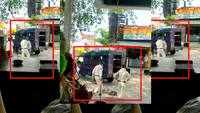 Madhya Pradesh: Gruesome video of two cops beating a man goes viral, cops taken off duty
Madhya Pradesh: Gruesome video of two cops beating a man goes viral, cops taken off duty 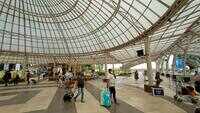 Maharashtra government says no to domestic flights
Maharashtra government says no to domestic flights 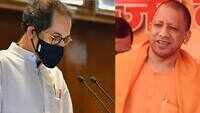 Shiv Sena slams UP CM Yogi Adityanath via mouthpiece Saamana, compares him to Hitler
Shiv Sena slams UP CM Yogi Adityanath via mouthpiece Saamana, compares him to Hitler 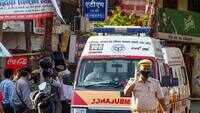 UP Govt prohibits use of mobile phones by patients in isolation wards of Covid-19 hospitals
UP Govt prohibits use of mobile phones by patients in isolation wards of Covid-19 hospitals
More from TOI
Navbharat Times
Featured Today in Travel
Quick Links
Kerala Coronavirus Helpline NumberHaryana Coronavirus Helpline NumberUP Coronavirus Helpline NumberBareilly NewsBhopal NewsCoronavirus in DelhiCoronavirus in HyderabadCoronavirus in IndiaCoronavirus symptomsCoronavirusRajasthan Coronavirus Helpline NumberAditya ThackerayShiv SenaFire in MumbaiAP Coronavirus Helpline NumberArvind KejriwalJammu Kashmir Coronavirus Helpline NumberSrinagar encounter
Get the app



